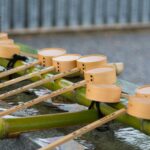It is always difficult to understand different countries’ rich traditions and cultures. You do not want to dishonor the cultural art. In Japanese culture, the Japanese katana or sword has gained a reputation as a war weapon and political tool. Still, it is not easy work to fully understand the sword. Below you will find the aspects you can consider while looking or handling an original Japanese katana.
Respect Japanese Katana
Nihontō (Japanese sword) refers to the traditional swords that are made in Japan, more commonly known as the Katana, or Samurai sword. On the finished blade, which is carefully made by infusing the spirit of the swordsmith into a piece of steel and then carefully polished to perfection.

If you look at Katana closely, intricate grain patterns developing from the surface of the steel known as Hada (grain) will be seen. On the blade’s edge, you will see the Hamon (blade pattern) created by the differentially hardened blade edge in the process. Well, the elaborate process will keep you wondering how to design your own katana and appreciate Japanese art to the fullest.
A katana has been transmitted from owner to owner with significant consideration. One is commonly believed to be only a temporary sword owner; it will eventually take over the task. To preserve integrity, a Japanese sword must be taken care of specifically. The rules are meant to protect the sword and the owner since it is a dangerously sharp blade.
- Bow Before & After
This helps concentrate on what is being done and will show respect to the previous owners.
- Extract & Insert The Sword
This rule is followed to make the blade slide on its back and not its side, resulting in scratch.
- Don’t Talk
Recommended by the experts that it is best not to talk while holding a katana. Tiny particles of saliva might contract with the blade and oxidise it.
- Never Touch the Blade
It is a golden rule that never touches the blade. Not even for checking.
- Pass with Attentiveness
It is best to pass the sword with both hilt bands, the sharp edge facing front.
How to Appreciate the Art of Japanese Katana?
Following are the aspects one must appreciate while looking at the Japanese katana.
- Sword’s Shape
Look at the blade’s dimensions (blade depth, thickness, length) and geometries (structure, kissaki length and curvature) to get more information, especially about its age. Learn to appreciate the beauty of the katana’s shape.
- Steel Structure
The jigane is the result of iron folding and hammering. It creates beautiful patterns that look like the wood’s grain. The understanding of jigane will end in understanding the blade’s quality.
- Look at the temper’s line and tang
The sword-maker has designed the hamon, and it is his primary artistic interpretation of the sword. Understanding hamon will enable us to understand the maker. The appreciation of hamon is quite similar to the liking of conceptual art. The nakago is the only part of the katana that is unpolished; hence the oxidation of this part will give information about the sword’s age. This is the only part of the sword that can be signed and dated.
Conclusion

Credits: Rodrigo Amorim
While appreciating a sword, it is essential to look at the history, school, and cultural background instead of the swordsmith’s name. If you look at the katana with interest, you will naturally notice the delicate details of the sword and appreciate the art of the Japanese sword.








